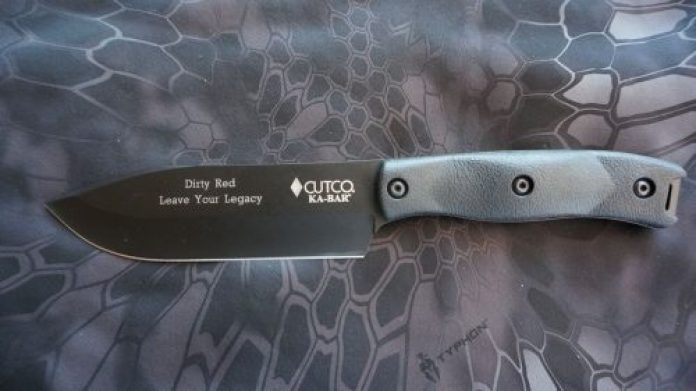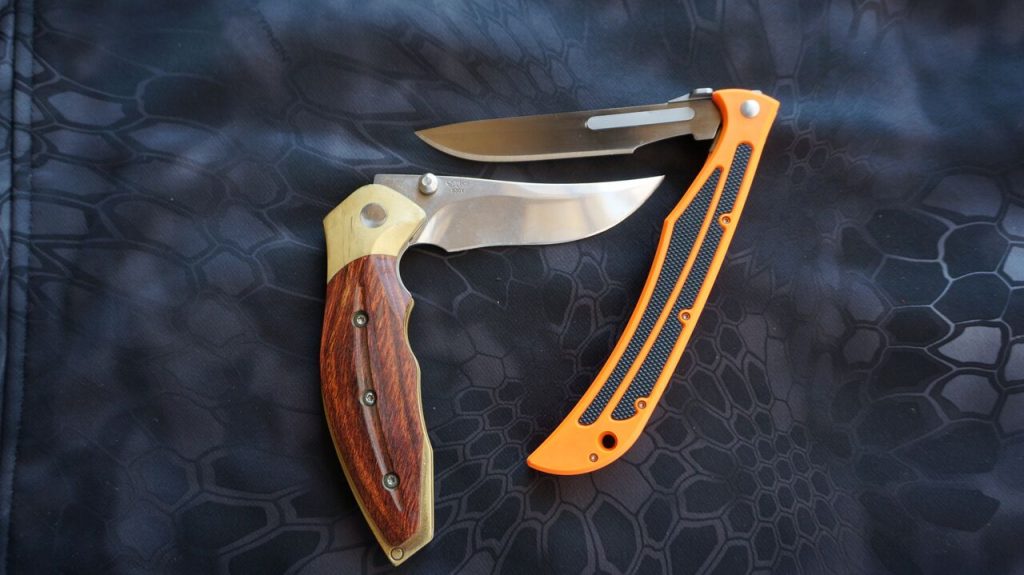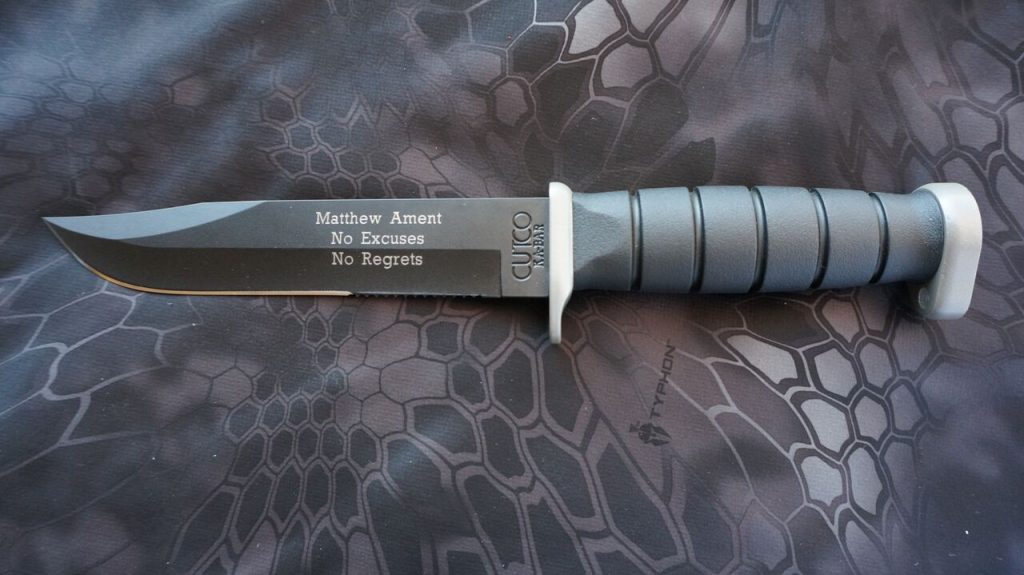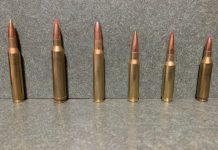
WRITTEN BY: MATT AMENT
How to Pick a Hunting Knife
Selecting the best hunting knife can be a challenge due to the various utilities and tasks that require specific qualities. Consequently, the first step is evaluating what you will be using the knife for. For example, if you only hunt rabbits, as compared to moose, you will need a smaller blade so you can properly break down the animal. Next, you must consciously decide what you are going to do with the animal. Are you going to completely break down the animal yourself, take care of the meat, and process it? Or are you just going to quarter it and then take it to the local butcher? These questions can help you narrow your choices from the wide selection of available knives. Once you have narrowed your choices based on those two questions you will be able to concentrate on the next four to determine the best possible knife:
-Folding versus Fixed Blade
-Blade Style
-Size
-Material
Folding Versus Fixed Blade
The first big decision is choosing between a fixed blade and a folding blade knife. A fixed blade knife is just that, it is permanently fixed in the open position. Because there are no moving parts in a fixed blade knife, they’re considered stronger and more reliable. However, the downside is the requirement of carrying it in a sheath or in your pack because of the size. If choosing a fixed blade knife it is crucial to determine the best tang length for your purposes. The tang is the handle end of the bare blade. This can either be a full tang or a half tang. A full tang knife is the most desired due to its durability, strength, and resistance to bending under stress.
On the other hand, the blades of a folding knife fold back into the handle. The knife has a locking feature that prevents the blade from closing while you’re using it. Because the blade folds back into the handle, the knife is more compact, which allows more versatility for carrying options. But this compact feature is also the folding knife’s biggest downfall. The empty handle and the point where the blade folds back are considered weak points and potential malfunctioning points. For any backcountry hunter that counts on his knife as a survival tool as well, these “weak” points are unacceptable. But if you only hunt once a season, a folding knife is a very smart option.
Some folding blade versions have the ability to change blades or change blade types. This gives the outdoorsman the ability to always have a razor sharp blade no matter the situation. You can only use one blade at a time, but you can carry a selection with you at a fraction of the overall weight of a fixed blade.

Blade Styles
Now that you’ve made the choice between fixed and folding, it’s time to choose your blade style. There are several types of blades available, and the choice boils down to personal preference and the type of game you typically hunt. The three most popular blade styles are the clip point, the drop point, and skinning blade.
1. The clip point is thin with a well-defined point. The blade itself is relatively flat. This knife is versatile enough to be used for general camp chores and specialized hunting jobs, including field dressing and skinning. The hunter who wants a good all-around knife should consider the clip point blade.
2. The drop point knife is a specific style of hunting knife. It is typically used to skin and dress animals. The blade is thick, curved, and has a “belly”. The blade does not have a distinct point, which makes it a great blade for skinning.
3. Skinning blades are just that, they are designed to skin game animals with precision. The blades are extremely sharp and hold an edge for a very long time. They usually are short, thin, and have a deep-bellied curve.
Once you’ve decided among these blades, you can also consider whether you want the blade to have serrations. These serrations allow you to use the blade for heavier jobs, such as splitting through a rib cage, or camp chores like cutting rope or wood.
Blade Size
Choosing a blade size will directly reflect the game which you are pursuing. If you are after moose or elk your blade size will differ from a hunter that only chases upland birds. For medium, to large game, a blade that is 4-6 inches will do the trick. For smaller game choose a blade of 2.5 to 4 inches in length. This size restriction is necessary to give the versatile and maneuverability required. You will need to maneuver a knife around bone, joint, and finer points such as caping your trophy for your taxidermist. Consequently, smaller usually wins in the outdoors.

Blade Material
The two most popular types of steel used in the construction of hunting knives are stainless steel and carbon steel. Like anything in this world, they each have advantages and disadvantages. A carbon steel knife is durable, less expensive, and the easiest to sharpen. Carbon steel knife blades are harder than stainless steel, which means that they will keep their edge for a much longer period of time. However, the biggest complaint against carbon steel is its tendency to rust. Unless these knives are cleaned and dried after each use they will rust in a damp environment. Cleaning your knife after each use keeps the blade clean, sharp, and reliable.
On the other hand, stainless steel blades are the most popular choice amongst outdoorsman due to durability. They are harder to sharpen and don’t keep an edge as long as other knives though. There is also a misconception about stainless steel that it never rusts. Stainless steel will rust, but the makeup of the blade ensures it will rust slowly. This means daily maintenance isn’t as important as carbon steel. Stainless steel blades are softer blades, causing these knives to lose their edge sooner. Having the understanding of how to properly sharpen your blade will be a must in the field with a stainless steel blade.
Conclusion
There has never been an overall winner in the game of knife selection. The best thing an outdoorsman can do is choose the parts of a knife to match his/her hunting style and personal desires. Take the time to clean and dry your blade so you can always keep a razor sharp edge. Even if a hunter’s knife, like his choice in a weapon, changes depending on the animal, this selection process will consistently remain the same.
What knife will you be carrying this hunting season?














